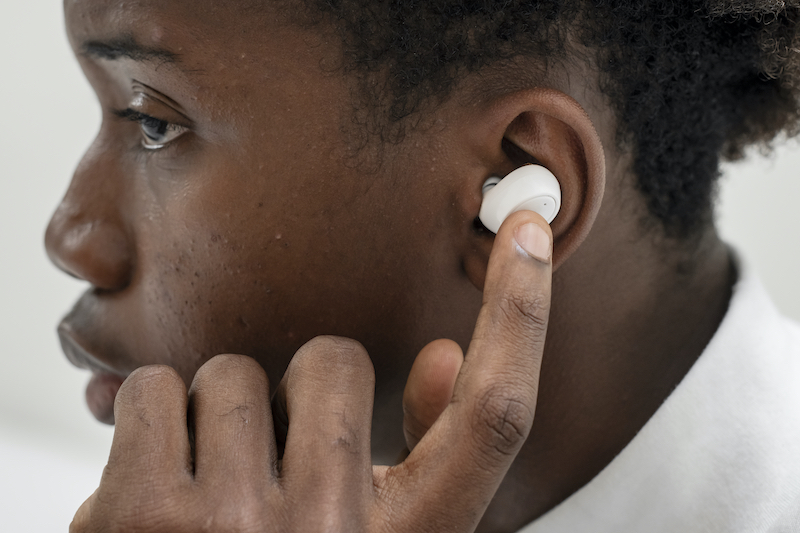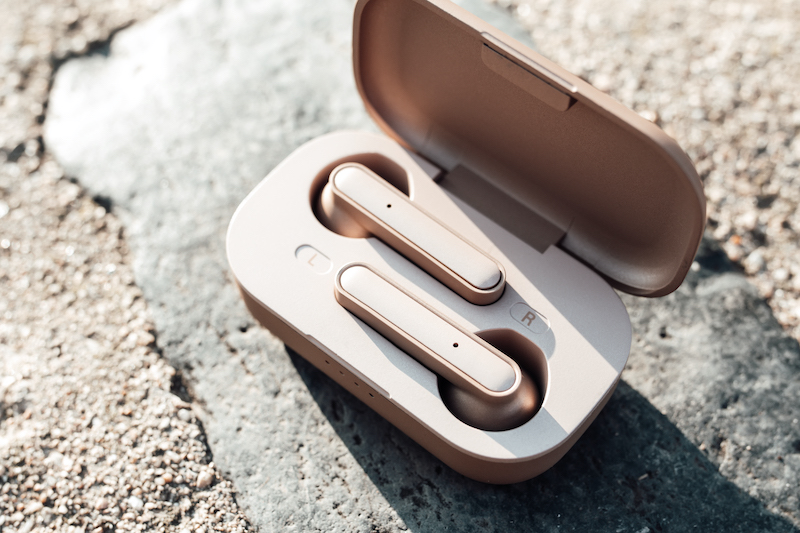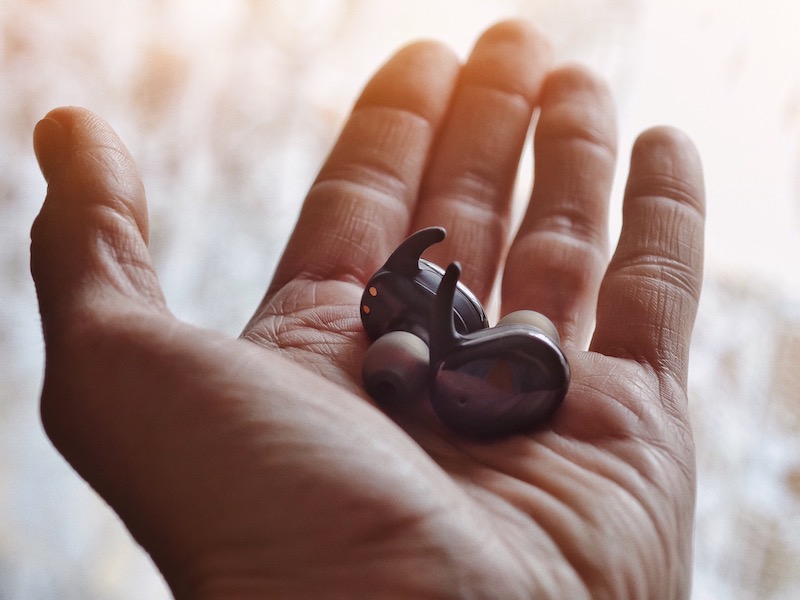If you’re a runner, you know that hitting the pavement or trail requires mental and physical endurance. To help push through those tough runs, many runners turn to music or podcasts as a source of motivation. But not just any headphones will do – you need a pair that can keep up with your active lifestyle.
In this article, we’ll discuss what to look for in running headphones to help you find the perfect pair for your runs. Whether you’re tackling a new pace, distance, or elevation, the best headphones can make all the difference in helping you reach your running goals.
Top Brands For Wireless Headphones & Earbuds For Running
Some of the most popular brands that produce wireless headphones and earbuds are:
This doesn’t mean running earbuds and headphones are limited to these brands but they are typically those that deliver constant updates to their products both physically and through firmware and software updates.
Purpose-Specific Headphones And Earbuds
There are different headphones, earbuds and sound devices that could help your running and fitness, depending on your personal preference and specifics of what you’re after. Here are some of the more popular choices amongst runners.
Why Should You Get A Pair of Running Headphones or Earbuds?
No one is really forcing you to, and it isn’t exactly “required” so it definitely comes down to personal preference if you want running headphones or earbuds.
However as mentioned, a lot of people find motivation and drive in listening to their favorite tracks or motivational music and podcasts. It helps people push themselves further whilst they’re trying to become better runners and might even keep you interested when it all gets a bit too repetitive and boring which should never be the case, but we all have our moments.
Only you will know why you should get headphones for running. Also, you might be asking yourself why do I need headphones specific for running?
Well, that’s a different story. It is important to have running headphones because of the water/sweat resistance as well as having a secure fit in order for them to not fall out when running, but we’ll get into the details of all of those nuances below.
How To Find The Best Running Headphones or Earbuds For You
There are a lot of things to consider when looking for the best headphones or earbuds for running. From water resistance, to fit and battery life. These are just some of the key features you’ll need to look out for when looking for the perfect pair for yourself.
Read on below to find out what important features to look out for.
1. Running Earbuds and Headphones Should Fit Securely
When we’re running, we’re constantly moving. We’re bopping our head up and down and we’re sometimes doing sprints, more so than carefree jogs.
Whatever the case might be, having a pair of earbuds like the AirPods might prove challenging for some.
They don’t provide a secure fit and they’re quite easy to come out due to them being quite slippery and not providing a secure fit.
So how do you know if running headphones fit well? Well, it depends. Some people opt for over-ear headphones and others go for earbuds

Over-ear headphones usually provide a secure fit but they lack other features such as sweat resistance, so make sure that when you’re looking for over-ear headphones that you ensure they provide sweat resistance on the strap that goes over your head.
With earbuds, only you can be the best judge. Some go for earbuds that have a silicone piece inside providing a secure fit, whilst others provide more stability by providing a frame that goes around the ear.
Usually, you would get a variety of pieces that you can swap out to fit your precise ear size and help seal inside your ear canals.
If you go for bone conduction headphones then you’re going to want ones that fit soundly behind your neck without creating too much movement.
2. Running Headphones and Earbuds Should Be Sweat and Water-Resistant
When you’re running or engaging in any form of physical activity, it’s likely that you’ll sweat. Some of us even enjoy running in the rain. In either case, you’ll need running headphones or earbuds that are resistant to both water and sweat.
You can determine whether headphones or earbuds are resistant to these elements by checking their IP certification. IP stands for Ingress Protection and is a two-digit grading system that assesses the resistance of mechanical and electrical items to various types of intrusions, such as dust, dirt, water, and moisture.
When looking at headphones and earbuds, we typically focus on the second digit.
If the product says IPX4, for example, it likely refers to the water and sweat resistance rating. Similarly, if it says IP4, it’s most likely referring to the water resistance rating.
The IPX rating system is used to measure the resistance of electronic devices, including headphones and earbuds, to various types of intrusions, such as dust, dirt, water, and moisture.
The rating is typically represented as a two-digit number, with the first digit representing the level of protection against solid objects and the second digit representing the level of protection against liquids.
For headphones and earbuds, the second digit is usually the most relevant, as it pertains to the device’s resistance to water and sweat. Here is a breakdown of the possible values for the second digit of an IPX rating:
- IPX0: No protection against water
- IPX1: Protection against dripping water
- IPX2: Protection against dripping water when tilted up to 15 degrees
- IPX3: Protection against spraying water
- IPX4: Protection against splashing water
- IPX5: Protection against water jets
- IPX6: Protection against strong water jets
- IPX7: Protection against immersion in water up to 1 meter deep
- IPX8: Protection against immersion in water deeper than 1 meter
Keep in mind that the IPX rating only applies to the level of protection offered by the device itself and does not take into account factors such as the environment or the user’s activity level.
For example, a device with an IPX4 rating may still be prone to water damage if it is used in heavy rain or if the user is sweating heavily.
Overall, when shopping for running headphones or earbuds, it is a good idea to look for a product with at least an IPX4 rating to ensure adequate protection against sweat and light rain.
If you plan on using the device in more extreme conditions, such as heavy rain or while swimming, you may want to look for a higher rating, such as IPX7 or IPX8.
There is a great explanation of IP Ratings available at dsmt.com.
3. Look Out For The Safety Features
Sometimes noise-canceling headphones or earbuds aren’t the smartest things. Remember, we’re outside in the street when we’re running and the real world is still moving along.
This means cars, bikes, other humans are all still moving around whilst we’re enjoying the beat of the song. With noise-canceling headphones or earbuds, you might not hear a car horning at you or someone yelling out to you, meaning your situational awareness is not going to be the greatest.
Don’t fret though – if you’re running in a park or an enclosed space there’s nothing wrong with using noise-canceling headphones but if you’re running in suburban streets with traffic and other challenging obstacles, then you might want to consider the safety features of your earbuds and headphones.
Some headphones have open-ear earbuds which allow your ears to still have noise coming from the outside world and helps you hear what’s going on.
Another option is bone conduction technology where you bypass the eardrums and the sound reaches your ears by the vibrations that come through the bones and skin.
4. Check The Fit
As we briefly mentioned above, make sure you check the fit and see which ones are the most suitable for you.
Whether that’s over-hear headphones, earbuds, bone conduction headphones, or open-ear earbuds that’s something only you can decide.
Some headphones and earbuds are truly wireless where they don’t have any cables or straps as well, whilst others still have some wires that go through and often times a strap that goes over your head or behind your ears and neck.
Bone conduction headphones would rest on your cheekbones and usually have a frame that goes around the neck to secure both sides.
For earbuds that don’t provide a secure fit in the ear canal, they’ll usually have ear hooks that sit behind and around the ear to provide a secure fit.
This usually comes in the form of those earbuds that are truly wireless and the normal wireless ones may have a frame that goes behind the neck to provide the fit that may also have ear hooks.
5. Check If There Are Any Software Requirements

Most headphones and earbuds come with applications developed by the various companies that have created them.
These often provide firmware updates to your headphones or earbuds and also let you adjust the sound quality, bass, and more directly from the application and via Bluetooth. Some headphones such as Bose require an internet connection to set up with Bose app.
If you are looking for an out-of-the-box solution, where you don’t want to use an app to set the headphones or earbuds up, especially in the case of having to use an internet connection then make sure that that this isn’t a requirement of the product you’re looking at purchasing.
6. Battery Life
If you’re not too fond of recharging your headphones or earbuds every week there are some that can go up to 40-hours on a single charge.
Other earbuds or headphones for running might come with an external charging cause (Much like you see with the AirPods) so that even if you do run out, you can pop them back in for a quick charge and continue with your run.
The standard for most headphones and earbuds seems to be between 6 to 10 hours and the majority of them in the lower end of the spectrum do come with an external charging case.

7. Wireless / Bluetooth Connectivity
If you’re running, and especially if you are doing sprinting drills as a part of your runs, then you will likely want to go for wireless headphones or earbuds with Bluetooth connectivity.
Having wires whilst you’re trying to run connected to your phone is going to present problems when things get strenuous and many have complained that putting wired headphones or earbuds through such strain tends to affect their connectivity over time and you start hearing distorted sounds.
Therefore, wireless and Bluetooth should be the way to go as a runner. The range of the Bluetooth isn’t too important as we runners typically keep our phones close to us during runs.
Headphones and earbuds with Bluetooth connectivity also assist with being able to control them via the apps that are provided by the products company.
8. Truly Wireless, or Wire-Connected Earbuds
Wireless headphones or earbuds will fall into the category of over-ear headphones or earbuds that have wires that connect the two together.
Truly wireless will typically come as earbuds and won’t have any wires connecting the two together at all, much like the AirPods.

Other than truly wireless usually being a lot more expensive there isn’t too much that separates the two. Some people prefer to have a wireless option with wires or an overhead or behind the neck option as it provides some level of safety of not losing your device.
Wireless headphones do tend to have more battery life than the truly wireless options however that is all changing very fast in the space and these days it is truly just a matter of preference and style of what you prefer.
The sound quality won’t be affected in any way as that all depends on the drivers inside the headphones or earbuds.
That said, if you’re paranoid of losing one piece of your earbuds, go wireless instead of true wireless.
9. Advanced Features
Some headphones and earbuds have advanced features such as controlling the sound on the earbuds themselves by tapping them directly which activates their sensors or by pressing buttons.
Some people like this option as it means they don’t need to use their phones to change songs or adjust volume, again it’s a personal preference.
Some earbuds such as the Bose Soundsport Pulse also contain unique features such as monitoring your heart rate and displaying this to you via the app. This can be seen as a gimmick, but hey, there’s a market for everyone.
Some headphones will also have inbuilt microphones so that you can take calls. Whilst not all earbuds and headphones will provide this it is starting to become a more standard option.
This often gets overlooked for people that are on the hunt for a new pair of headphones or earbuds. If you are a person that often takes calls or sometimes feels like talking when they’re on their run then make sure that you look for those that have this feature
10. Other Things to Look Out For in running headphones or earbuds
Durability
Running headphones or earbuds should be durable. Not only should they be water and sweat-resistant but they should be sturdy enough to not fall apart if they hit the ground. Being an avid runner, you’re likely to have a moment or two where you drop your headphones or earbuds and you want them to be able to withstand the pressure.
We’ve reviewed some of the best earbuds and headphones for this purpose to ensure that runners get the most out of their chosen product.
Weight
We briefly touched on it before, but having heavy headphones might not be the most ideal for everyone as it adds weight to your head and to your neck or shoulders which can cause strain. This is why most runners opt for earbuds as these are extremely lightweight and fit comfortably in the ear.
Compatibility
It’s rare these days, but make sure that the earbuds or headphones that you’re purchasing are compatible with the phone software that you’re using as this is where you’re going to install the app that most products provide. Some products may only be suitable for iOS whilst others are for Android.
As such when you connect it to the computer to perform firmware updates it might be that one is only suitable for Windows, whilst the others only work on Mac. It’ll be a bummer to figure out that your phone or computer system isn’t compatible with your headphones or earbuds so look out for this.
Sound quality
Consider the sound quality of the headphones or earbuds. For many runners, music or audiobooks can be an important part of the running experience, so good sound quality can be important.
Bluetooth connectivity
Look for headphones or earbuds with reliable Bluetooth connectivity to ensure that your audio doesn’t skip or drop out during runs.
Consider whether the headphones or earbuds have easy-to-use control buttons for adjusting volume, skipping tracks, or answering calls.
Compatibility with voice assistants
If you use a voice assistant such as Siri or Google Assistant, look for headphones or earbuds that are compatible and allow you to access these features easily while running.
Compatibility with running apps
If you use running apps such as Strava or Nike Run Club, consider whether the headphones or earbuds are compatible and can provide audio cues or feedback during runs.
Frequently Asked Questions On Running Headphones & Earbuds
Here are our answers to some of your most commonly asked questions.
Wired headphones and earbuds may get in the way of your arms and head when you’re running and cause frustrations. Whilst it is better than nothing, most runners opt for wireless headphones or earbuds as they prevent any wires from getting in your way.
It depends, sometimes headphones might be bulky and feel heavy when you’re running and therefore earbuds could be a better option. Some people like the sound that complete over-ear headphones bring though, so it is going to be a toss-up between comfort, weight, and quality of sound. For the most part, runners use earbuds on their runs, and headphones are seen much more frequently as part of gym workouts.
IPX4 does the job well, however, some headphones and earbuds go all the way up to IPX7. With an IPX7 if it’s raining buckets you’re going to get a lot more protection on them than the IPX4. The IPX4 would be able to withstand a bit of rain but you wouldn’t want to push it through a storm.
They definitely offer more safety features from the world around you. As bone conduction headphones tend to sit on your cheekbones, your eardrums are still present to all of the sounds that are occurring outside.
Conclusion
Running headphones and earbuds are a great way to motivate you through your runs and reach new personal bests.
However make sure that you always keep safety in mind and be aware of your surroundings, especially if you’re using noise-canceling headphones or earbuds.

Marko Rakic is a trail runner and fitness enthusiast from Sydney, Australia. He is the lead writer for The Ultimate Primate and believes the best way to live a happy life is through constantly challenging yourself.
